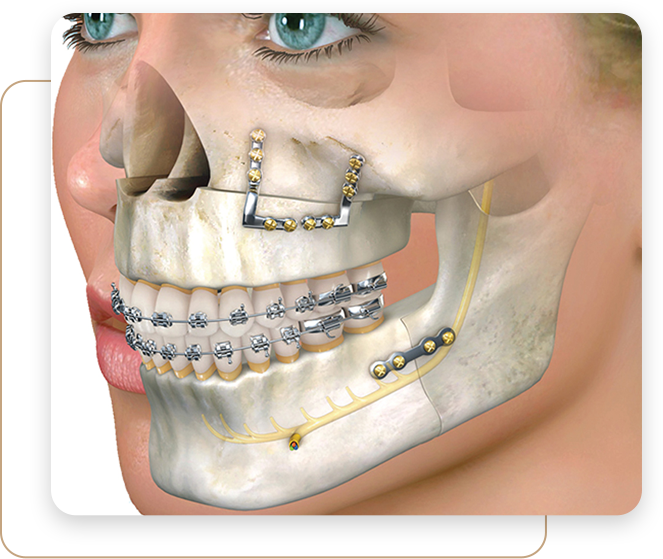
Başlıklar
There are disorders in which the upper and lower jaws, which cause problems in terms of both functional and aesthetic appearance, are incompatible with each other and other formations on the face (nose, eyes, cheeks). These mismatches and disorders can be developmental or may occur as a result of diseases and accidents. Such people; they face both aesthetic, speech and nutritional problems. The branch of surgery that treats appearance and biting problems due to the incompatibility of the upper and lower jaw bones is called orthodontic surgery. Although there are such problems and disproportions in many patients who present to plastic surgeons with facial aesthetic concerns, patients may not have noticed this. For example, a patient with a complaint of nose size may also have problems with jaw sizes. Although shrinking the nose will contribute to the aesthetic appearance, a complete recovery may not be mentioned. It is important to remember that it is an aesthetic harmony! Our eyes perceive the face as a whole in proportions. True beauty depends more on the relationship and harmony of the parts than the structure of individual parts. By correcting the harmony between orthognatic surgery and facial bones, both functional and aesthetic improvement is achieved.

Orthognatic surgery may be used in some cases caused by developmental or other reasons. If we look at these in general:
*Situations where the face is longer or shorter than normal,
*Situations where gums are very extreme when laughing (gummy smile deformity),
*Situations where the upper jaw or lower jaw is behind,
*Situations where the upper jaw or lower jaw is ahead,
*Situations where the upper jaw or lower jaw is forward or behind compared to each other,
*Conditions with anterior open-bite defect in the front teeth,
*Situations in which the lower jaw shifts to the side (laterognati),
*It is disorders in which orthognatic surgery is performed.
In orthognatic surgery, the aim is to ensure that the upper and lower jaws are compatible with each other and that they close harmoniously in their teeth. For this reason, ORTHODONTIC treatment and ORTHOTHOCYTIC surgery are two integral treatment methods. Orthodontics is the department of dentistry dealing with dental formation disorders and intricacies. It performs months of sequencing-angle correction with the common application known as wire insertion into the teeth. Restoring the teeth to a healthy anatomical order also provides an important aesthetic gain for the patient. In order for the teeth to properly meet each other after surgery, this treatment must be completed before orthognatic treatment. Wire treatment continues for at least 6 months in order to prevent the problem from recurrent after surgery.
Although dental formations are normal, only jaw tip deformities can be seen. Disorders of the eye area and cheekbones may also accompany the event. In such cases, it should be planned to shape the upper face area bones and jaw tip along with the jaw bones.
Orthognatic jaw surgery is performed in the hospital and under general anesthesia. In case of infections that may occur in such surgeries, these surgeries should be performed in a full-fledged hospital under sterile surgery conditions. As long as these are observed, the risk of infection is extremely low. The operation is performed without removing the braces after the disfigurement of the teeth is removed during orthodontic treatment. There is no external trace due to the incisions made through the mouth. Incisions and fractures are formed in the appropriate areas of the bones and the positions of the bones are changed in accordance with the analysis carried out with the dentist before the surgery. The bones are fixed in their appropriate place with titanium plaque and/or screws. Connecting the teeth may be necessary depending on the method applied. There are no problems with nutrition. The resulting swellings pass in a few weeks.
